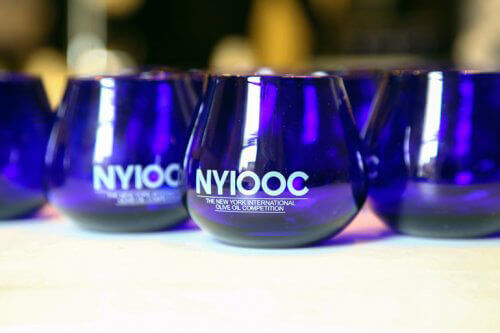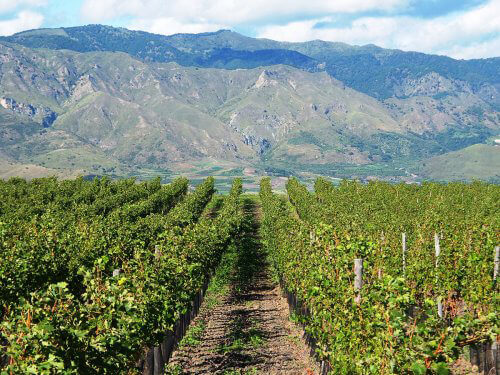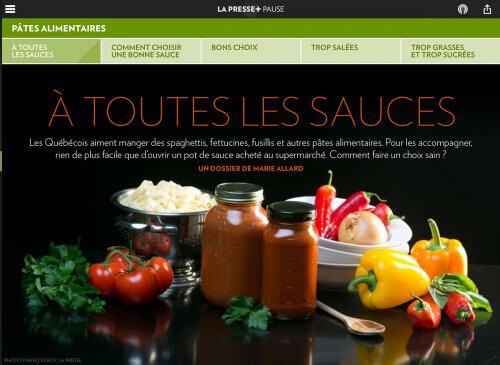It all started with a trip to Almeria, Spain in 1999. Our first vacation without our children, which meant we could do anything we wanted to do. We would drive out to the countryside and explore the many small towns in the Spanish hillside. It was during these day trips that it started. Unbeknownst to us, we were becoming fascinated with these groves: huge groves sweeping down hillsides, small old groves with gnarly tree trunks and everything in between. We were hooked.
Upon our return to Canada and back to work the olive groves became a distant memory until the day my brothers and I sold our company. Now what? You need to do something? So, Sheri and I bought a small cherry orchard in British Columbia’s Okanagan Valley. We farmed there for a few years and that’s when the olive groves of Spain became fresh in my mind again. We did some research and quickly realized that olives would not grow in the Okanagan, far too cold in the winter. However, during our search, we were encouraged by a small olive grower in Northern Oregon who told us that you could have a chance of growing olives if you plant in an area that produces pinot noir grapes and in which the Madrone tree grows (called Arbutus tree in Canada).
We found this micro climate on the Gulf Islands off the west coast of Canada. So now the search was on to find just the right piece of land to establish our grove. We found it on Salt Spring Island. We bought a 72-acre farm in the summer of 2010. Now the real work was going to start. We dug up the fields and installed field drains. We get a lot of rain in the winter and early spring and we wanted our future trees to have the best start possible.
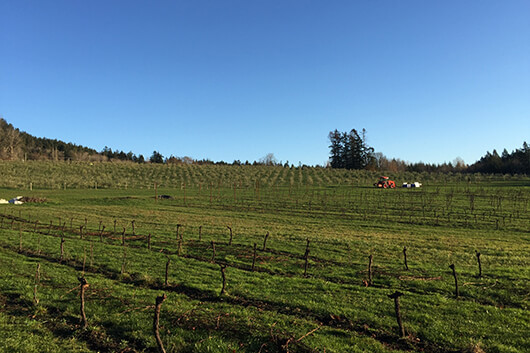
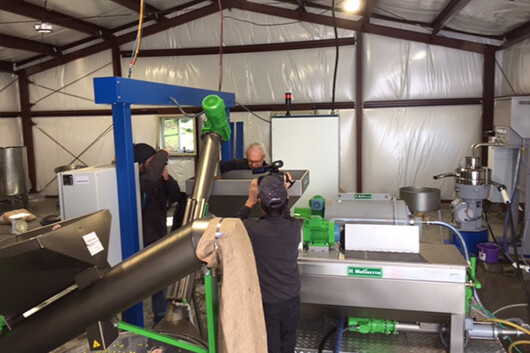
Then off we went on the search for olive trees. This would prove more difficult than I had expected. Through email after email and many telephone calls, every nursery I contacted told me that olive trees will not grow in Canada and that I would be wasting both my time and money. But it takes a lot of “It can’t be done” for me to hear! Finally, I found Olivi Nursery in Fairfield, California, that was willing to comply with Canada’s food inspection agency and ship to Canada. After much discussion, we settled on Frantoio, Leccino and Maurino as the three varieties that may survive and grow, as they are considered as somewhat cold hardy. We placed an order for 350 of each of the three varieties which were to be delivered in the summer of 2011. It instantly became clear to us that we would have to build a greenhouse to nurture these very small trees that had been bare rooted for importation requirements and grow them out for a year before transplanting them into the fields. Then finally, in the summer of 2012 we took our potted trees from the greenhouse and planted approximately 1000 trees into our first olive grove.
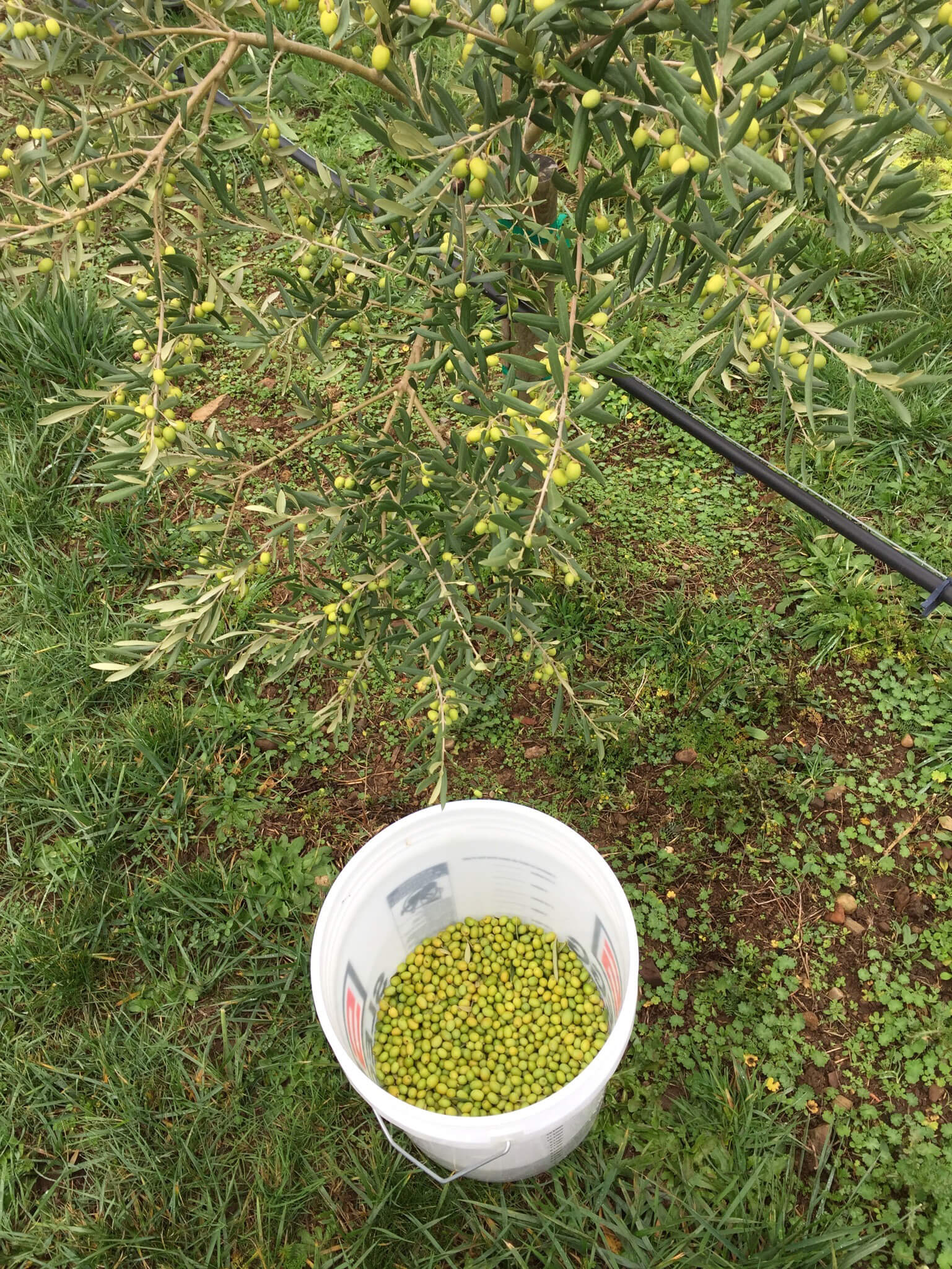
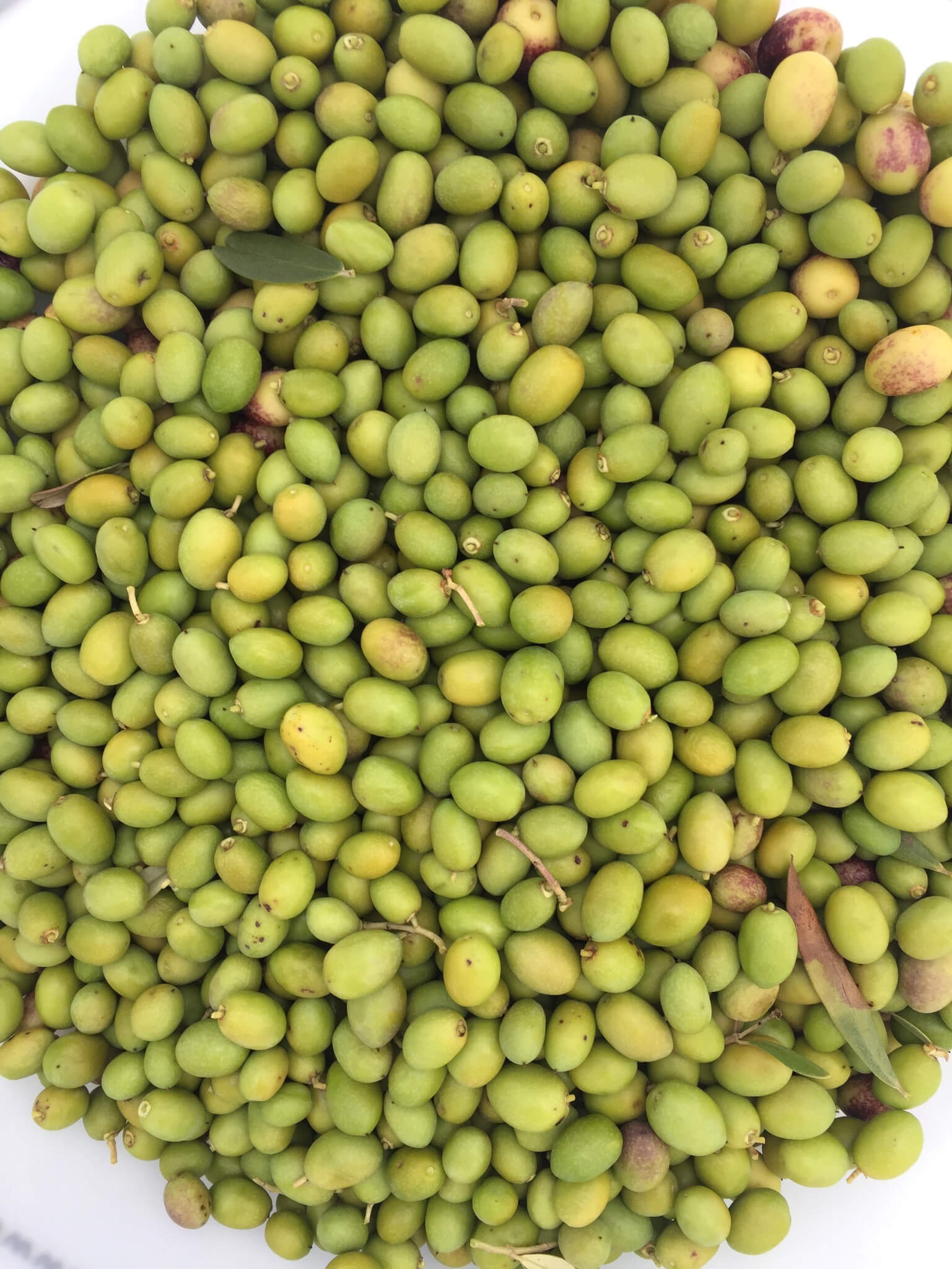
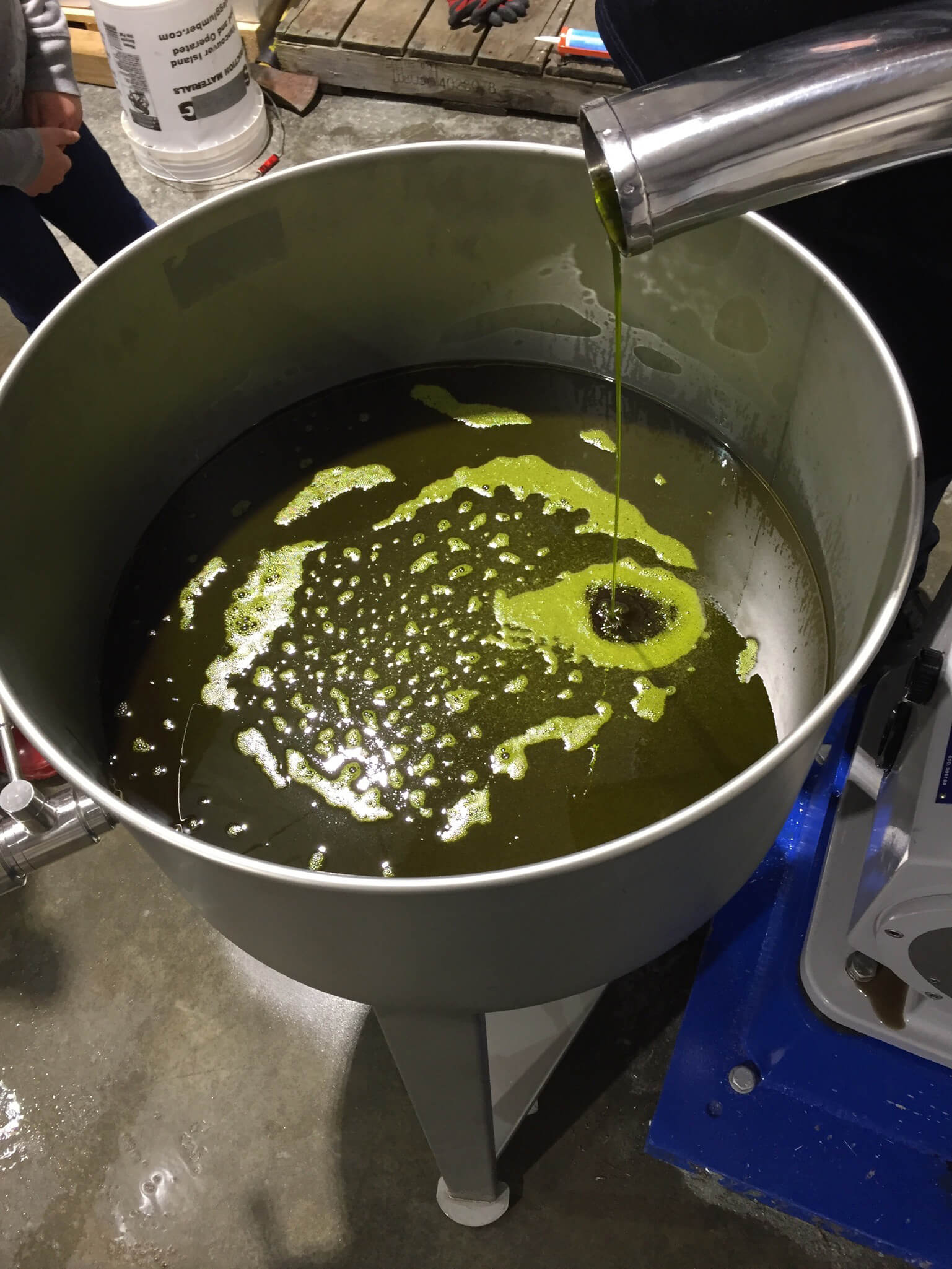
We tended and fertilized and prayed a lot as we watched and worried while the trees grew. Within a few years, they even produced the odd olive here and there. Then in 2016, we were pleasantly surprised with the amount of olives our trees were producing. A very small amount, really, but enough for us to consider buying an olive mill to see if we could actually produce oil and find out what it would taste like. Would it be edible? During our 4 years of watching and waiting to see if our trees would produce olives, we were also researching the many different types of olive mills available. We finally decided on the Il Molinetto made by Pieralisi, far too big for what we need now but hopefully just the right size for our future needs. The mill arrived late November 2016 and was installed by Pieralisi at the beginning of December. Then on December 4, 2016, with family and friends we picked and harvested our first crop. A thousand pounds of very green olives arrived at the mill late afternoon and we began the milling process. We all listened, learned and took notes from the Pieralisi technician as he went through the various steps the olives took through the mill. It was exciting to put into practice all that we had learned from our “Master Millers course” at University of California, Davis the previous fall. From washing, crushing, malaxing, to pumping the paste into the centrifuge and finally watching the oil flow from the separator into small tanks, it was all so challenging and fascinating at the same time.
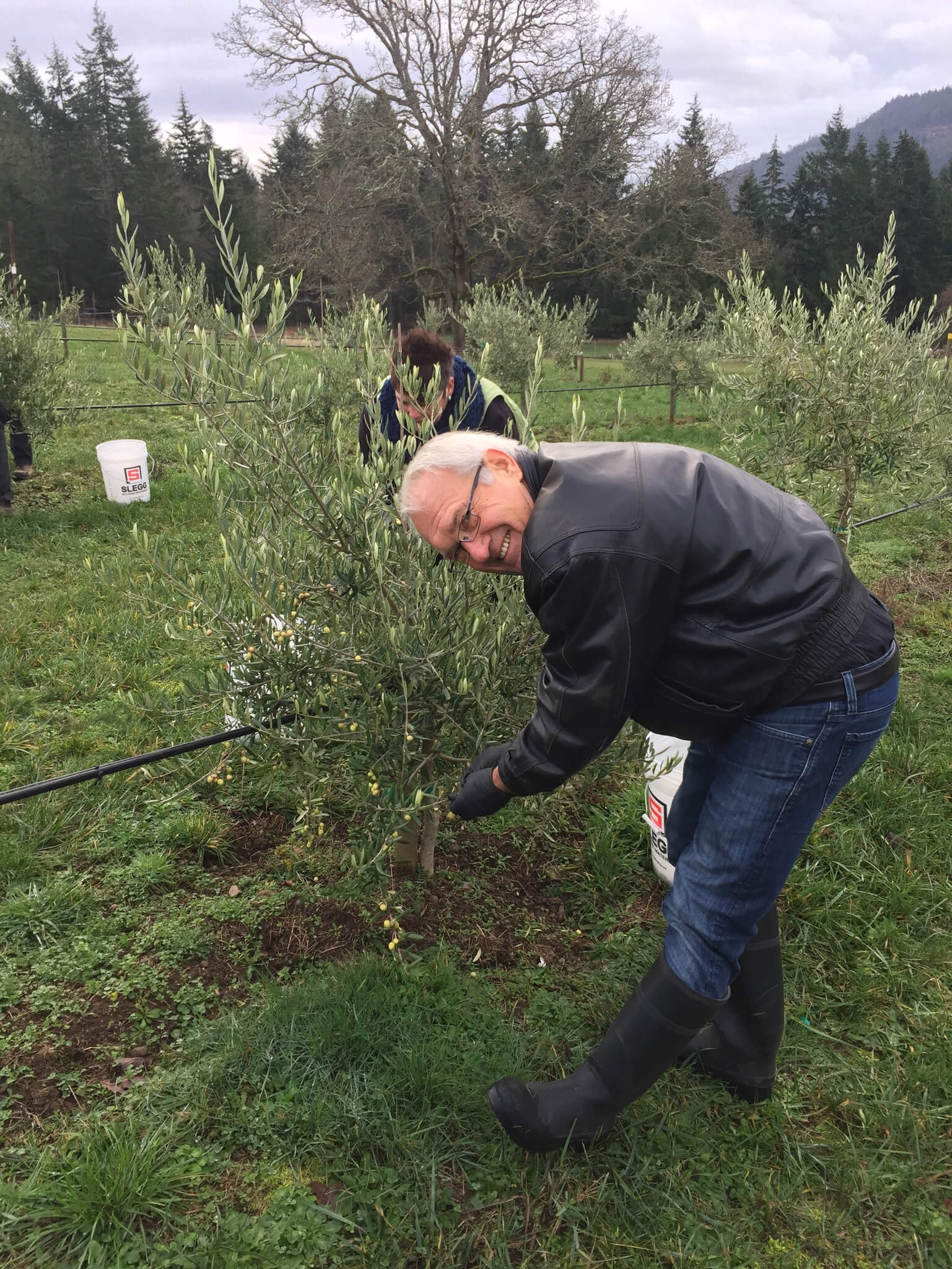
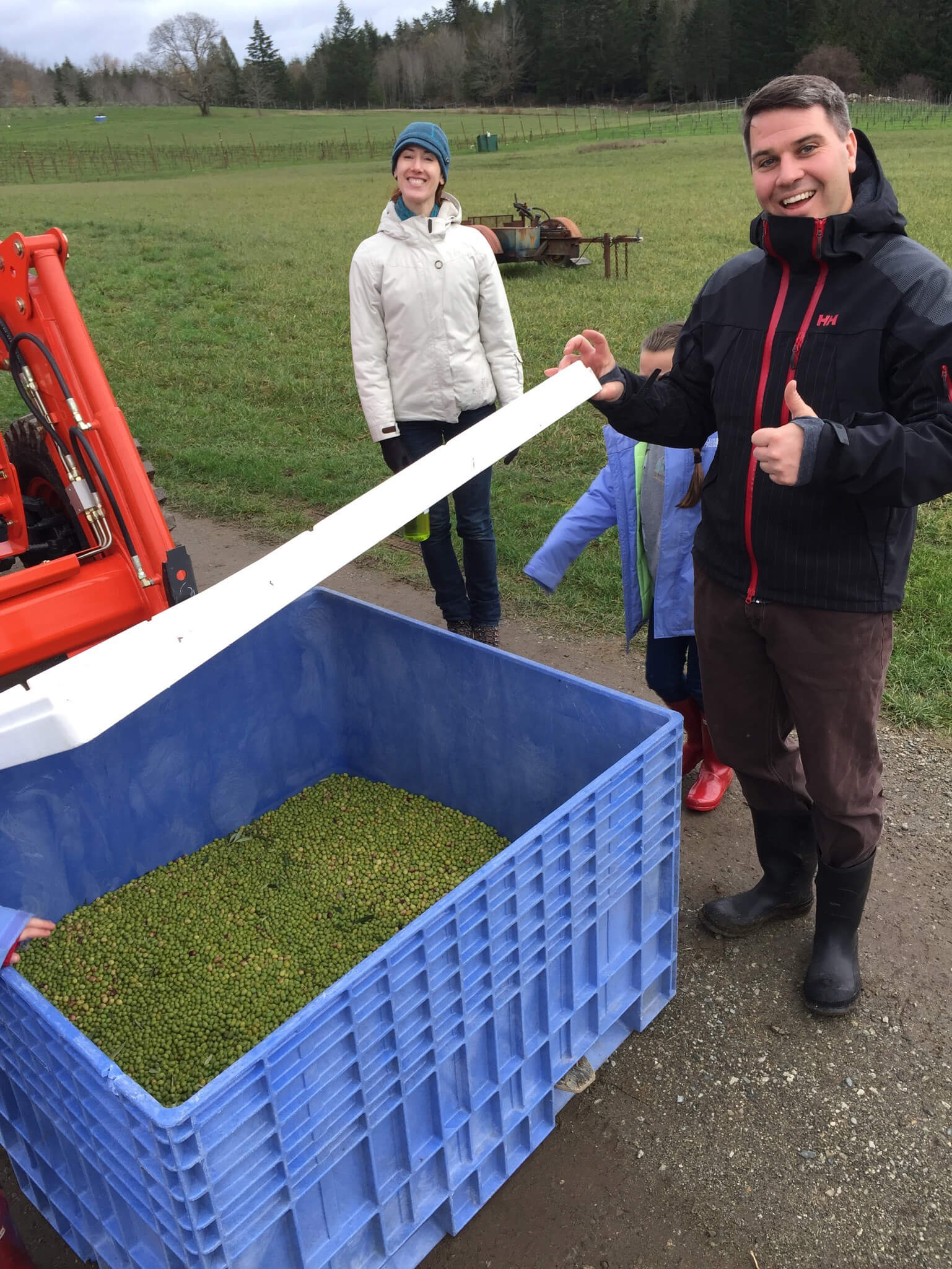
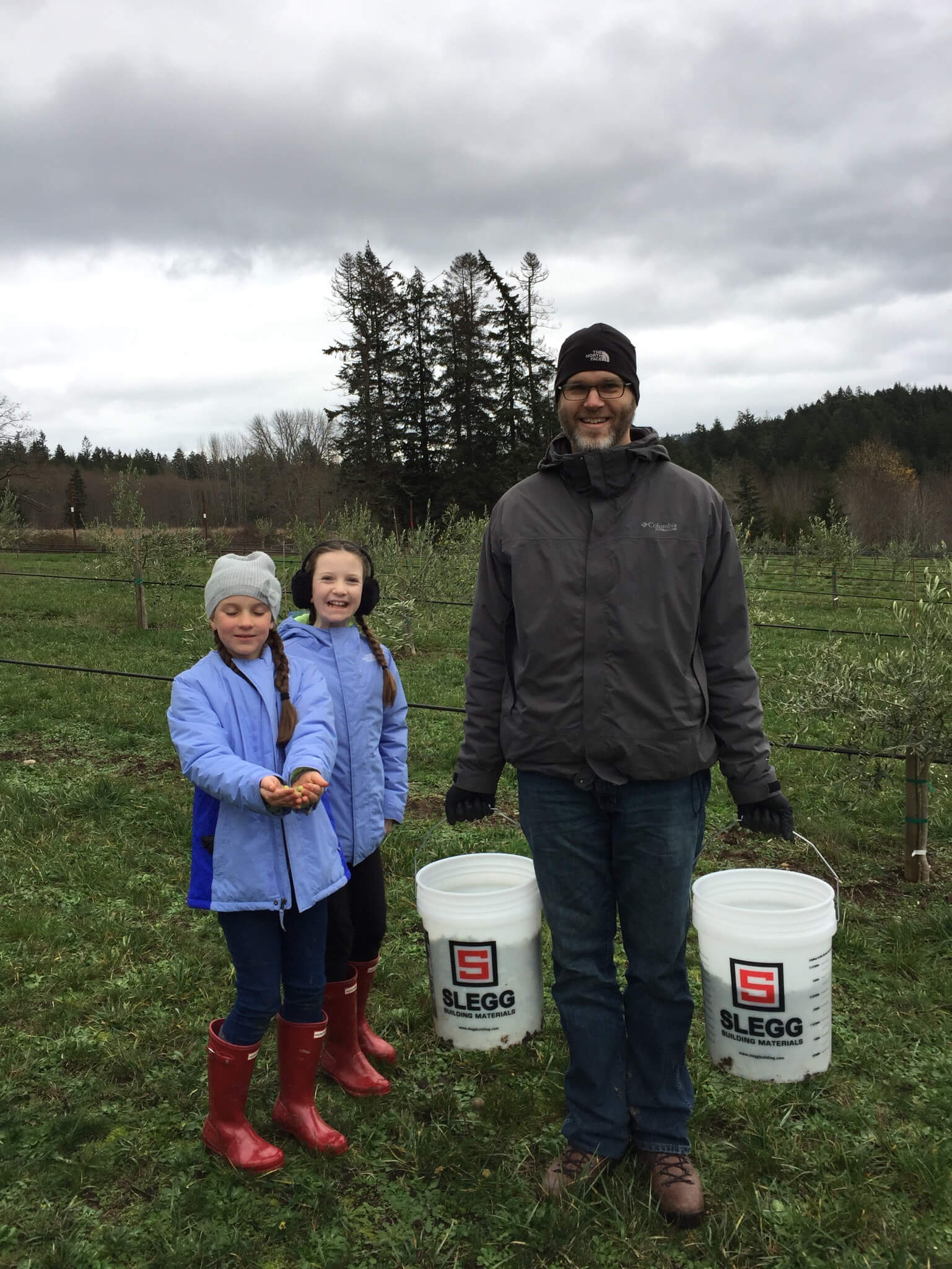
As mentioned, we have three main varieties. The yield was very small, but it is still the first and largest ever in Canada. The 350 Maurino produced approximately 500 lb of fruit, yielding 20 litres of oil. Our field blend, a combination of Frantoio and Leccino along with a small amount of Pendolino, produced a 500 lb of fruit combined, yielding 12 litres of oil. We are very confident that both our production and yield will increase as the trees continue to grow on our farm, which by the way, is positioned at 48 degrees, 47 minutes north. So, given our experiences, there is a real possibility that with the right micro climate, olives can survive north of the 46th parallel.
We hope this gives a little insight into what it took for us to get to a place where can say we produced Canada’s first ever 100% EVOO!


